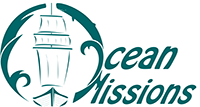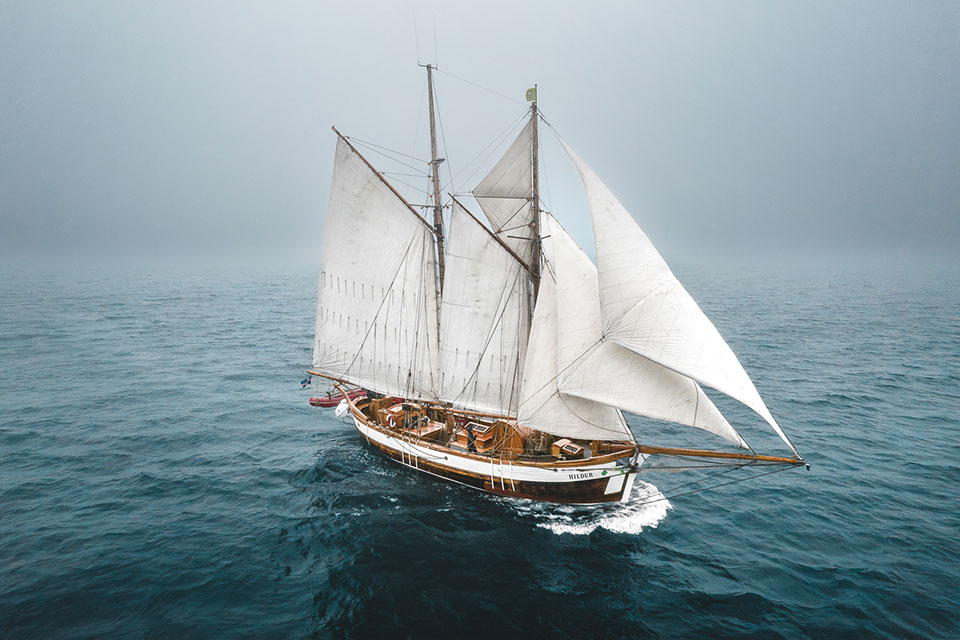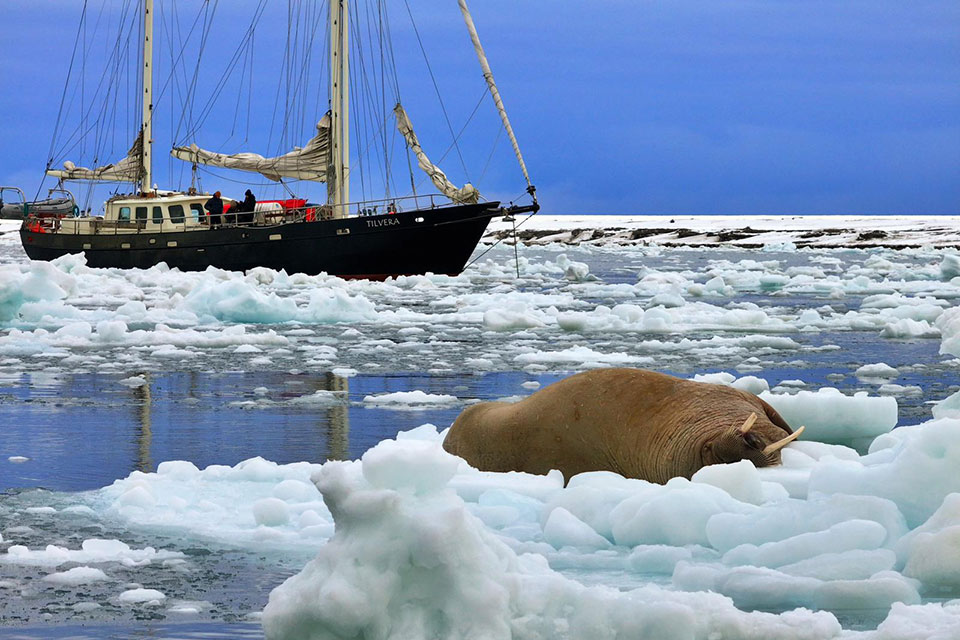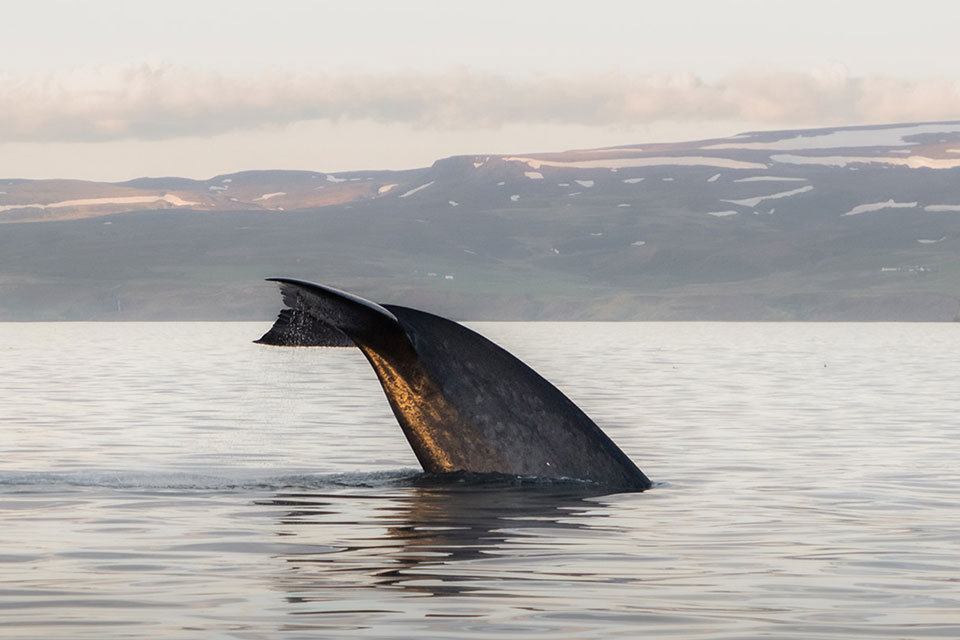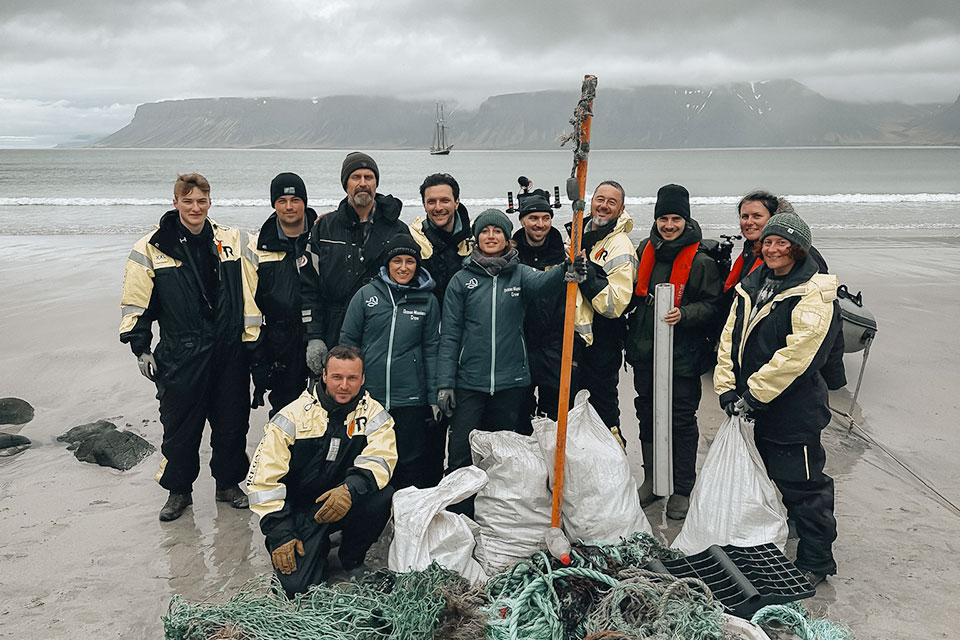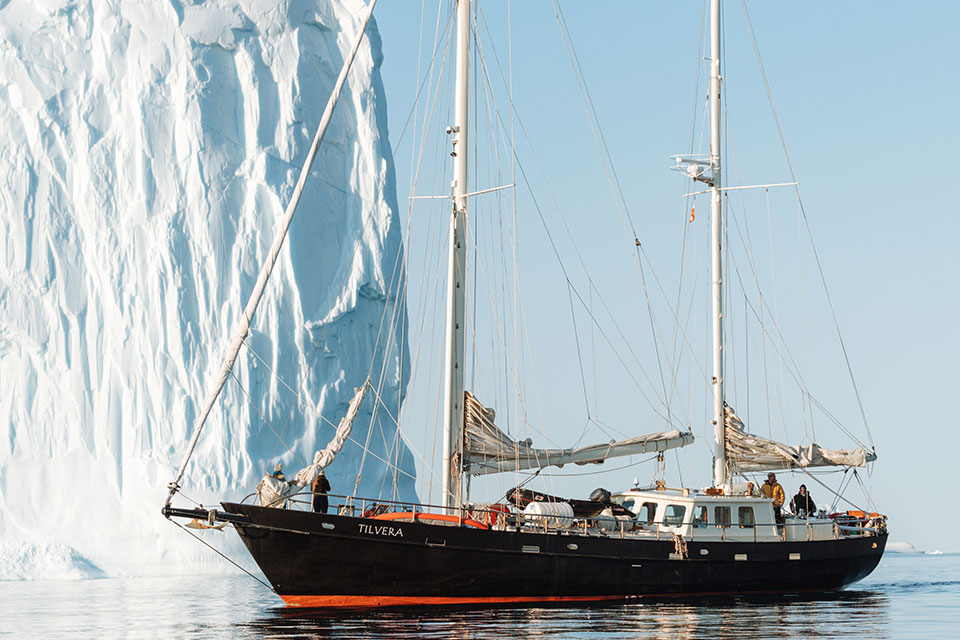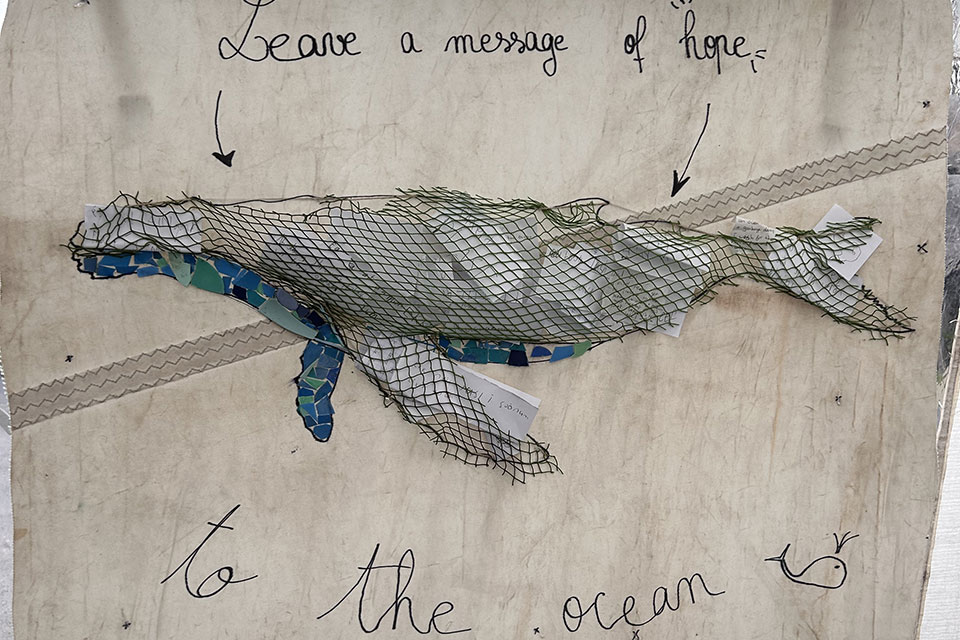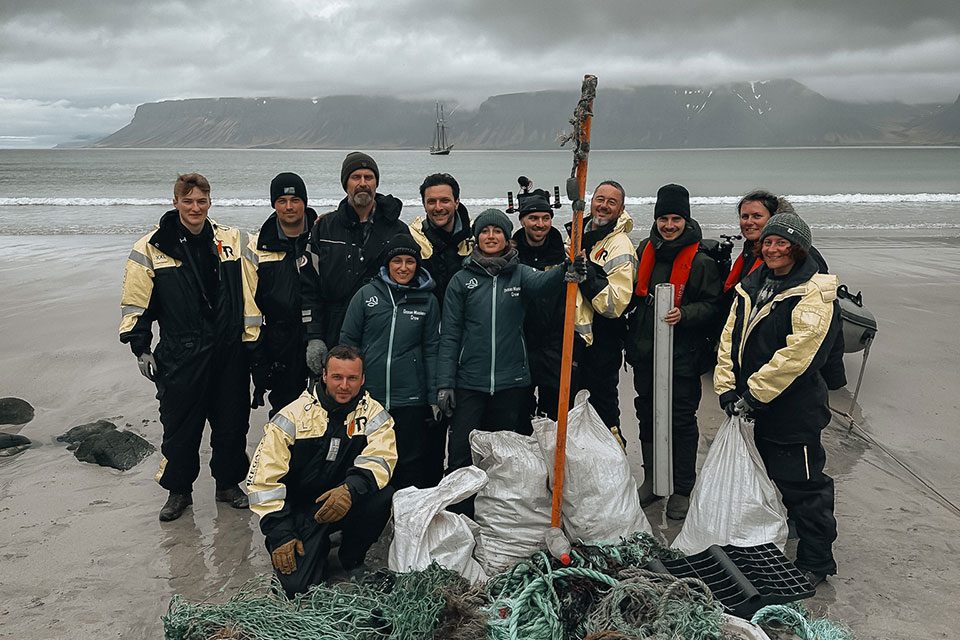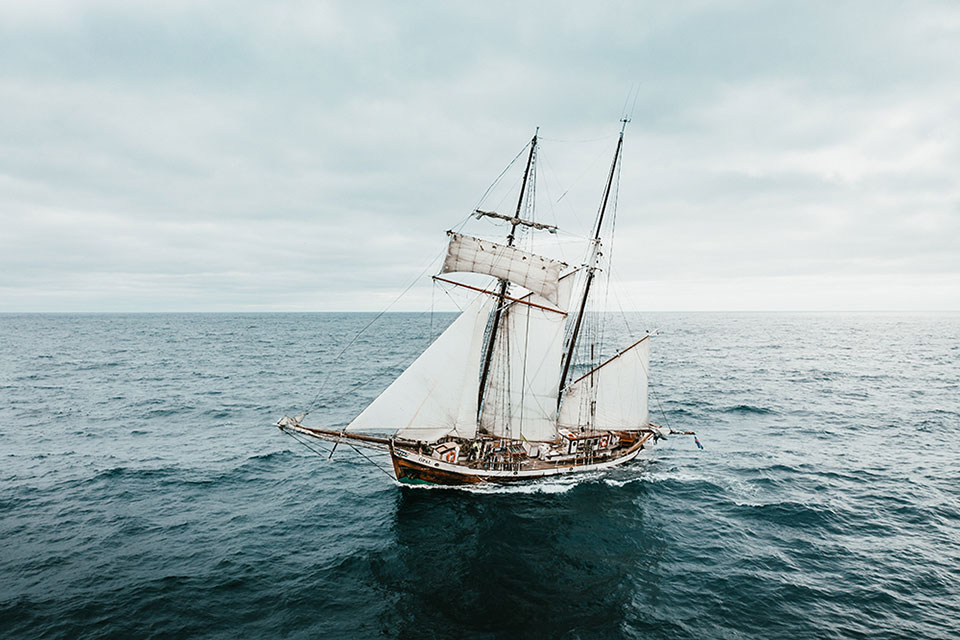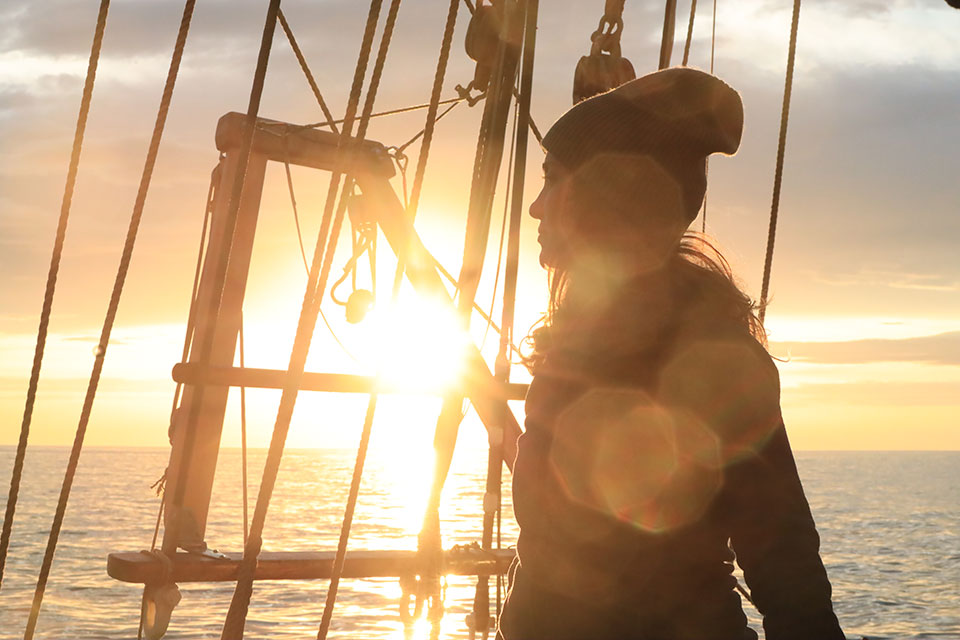On the calm, sunny autumn morning of September 28th, we departed from our home port of Húsavík on our 7th expedition with four crew and 10 enthusiastic participants ready to set sails for sustainability and become ocean ambassadors.
We did not have to wait long to have our first exciting experience. Just a short distance from port, we were greeted by two humpback whales finishing up their feeding season before they would soon be migrating south to warmer waters.
The nice weather continued as we sailed on to the mouth of Eyjafjörður, and our luck only increased. Here were eight humpback whales busy feeding and even interacting with each other! You could feel the grateful mood onboard as we watched them in the late-day autumn light.
Here is also where we conducted our first surface water sampling with our “manta trawl”. Given how many whales were in this area, we knew this sampling would provide us with interesting information. This is when the reality of the plastic pollution problem first sunk in on this expedition. Our trawls revealed the clear reason why the whales were there, there was plentiful small fish and zooplankton for them to feed on, but, unfortunately, mixed in with this was a high amount of microplastic particles. The apparent link to baleen whales, who are filter feeders, incidentally eating microplastic in Iceland was clear and this was motivation for everyone to continue the fight against plastics.

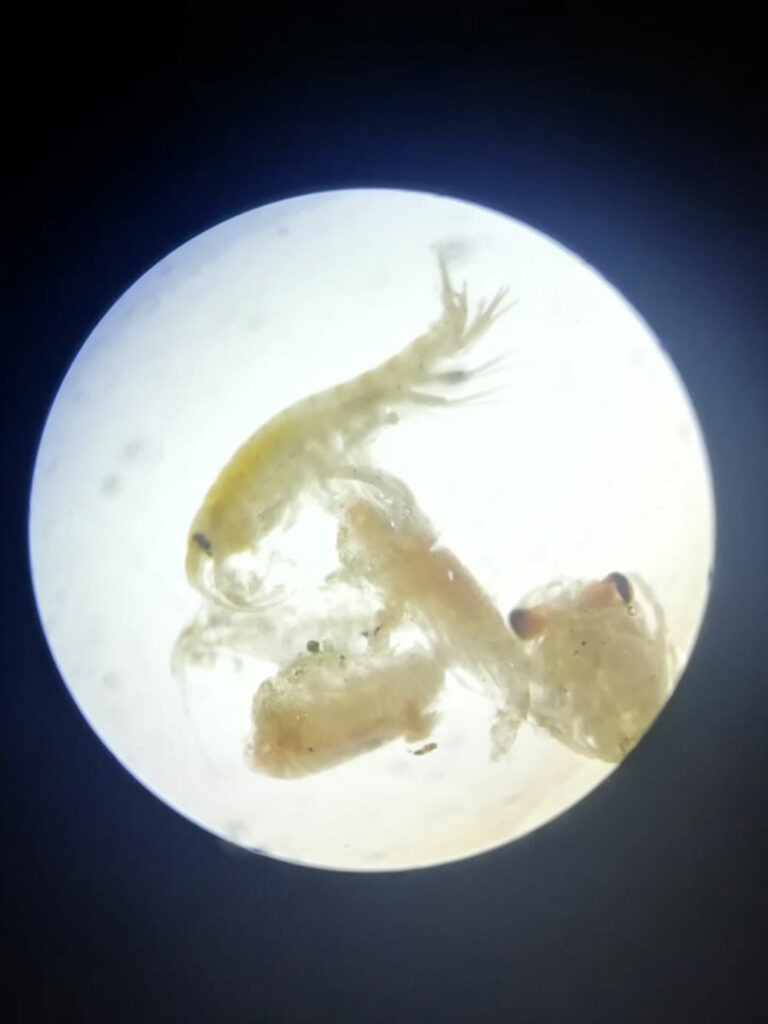
Chasing the good weather for as long as we could, we sailed overnight to Hornstrandir, one of the most remote and beautiful places in Iceland. We were approaching the famous “Horn” cliffs at sunrise; what an invigorating view to wake up to! This is another area where we conduct manta trawl sampling, to investigate how microplastics reach remote, uninhabited areas.
Next up, we made the decision to cross something important off of many passengers’ bucket-lists: sail across the Arctic Circle. We set the sails and in choppy seas, where we could feel the power of the North Atlantic Ocean becoming the Arctic Ocean, everyone onboard were now officially Arctic sailors.
We then sailed into the remote glacier fjords to spend the night on anchor. Here, we began to feel the power of Icelandic nature as stormy weather with 50kt winds went over us. However, we were cozy and warm inside Ópal. Well, some of us (crew) were resetting the anchor in the pouring rain at 01:00 in the morning.
The next morning, the stormy weather continued, and we decided to sail into port in the charming town of Ísafjörður. Here, University Centre of the Westfjords staff and students often meet us during our stops and we get the opportunity to enjoy cultural events in the town. The next morning, we were not going to let the stormy weather stop us from our mission to leave Ísafjorður better than we found it. Though we could not get onto the beach due to high waves, we cleaned up the rock wall barrier and walkway along the ocean. Once we looked closely, there was a lot of work to be done there, particularly picking up tiny trash such as cigarette butts.
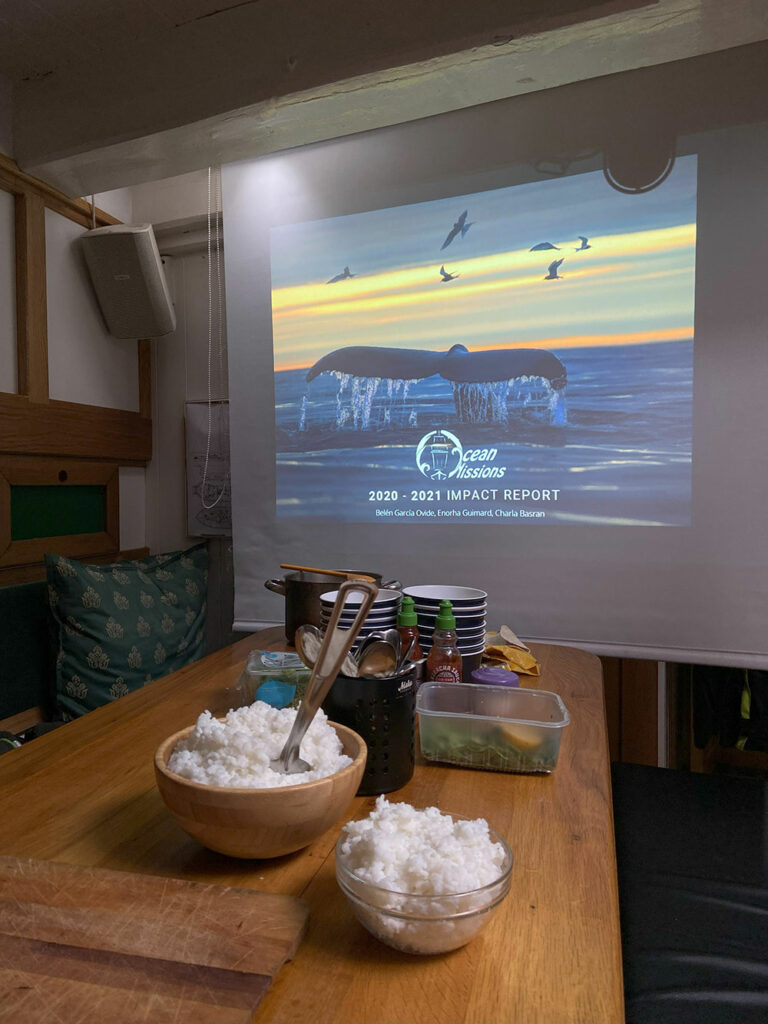
In the late afternoon we left the port of Ísafjorður and again conducted manta trawl sampling in the shelter of the fjord close to the harbour. It is interesting to compare samples collected in locations like this vs. remote locations like Hornstrandir. We sailed through the night in stormy seas, with everyone testing out their hard-earned sea-legs, on our way to and around the Snæfellsnes peninsula.
The next day, we continued on towards Akranes. The birds were clearly not deterred by the weather, and we conducted a bird survey, where we log all birds in the ebird app along a transect for 30 minutes. We arrived in Akranes late in the night, and after a much deserved rest, we headed to the local beach for a beach cleanup including collecting OSPAR survey data. This is where we first pick up and classify all man-made items on the beach over a 100m transect, to be logged in a standardized database.
Feeling accomplished, it was time to head for our final destination of Reykjavík. Coming into port for the final time after a week of sailing and adventures always stirs up mixed emotions. Many laugh as we look back on the amazing stories and then cry as we say goodbye (for now). This was a memorable trip of extremes: calm seas and sunshine to high seas and strong winds; magical moments with wildlife to stark realizations about the threat plastic poses to it.
One thing was certain: It was a trip that certainly brought everyone closer to nature.
